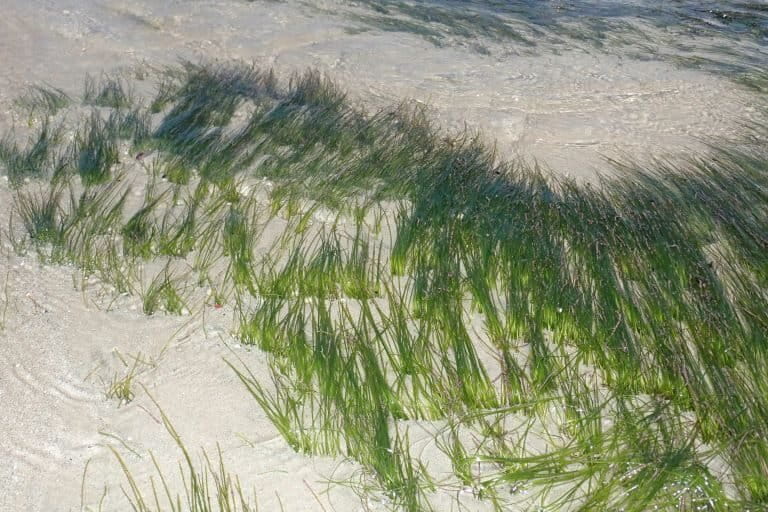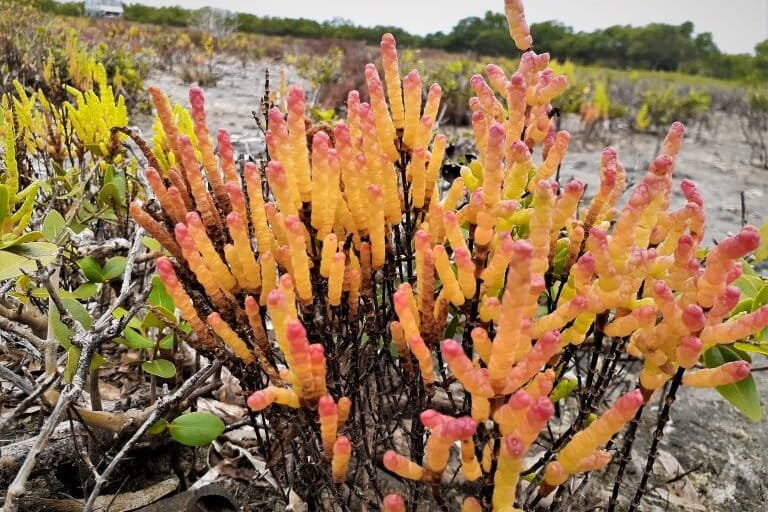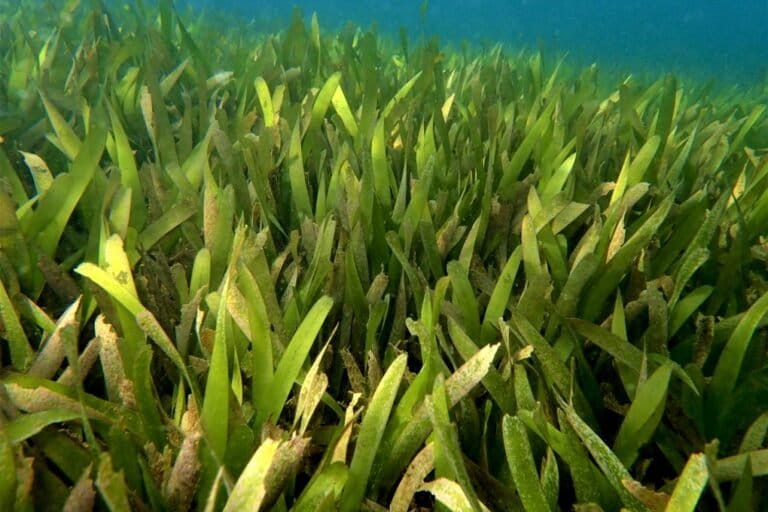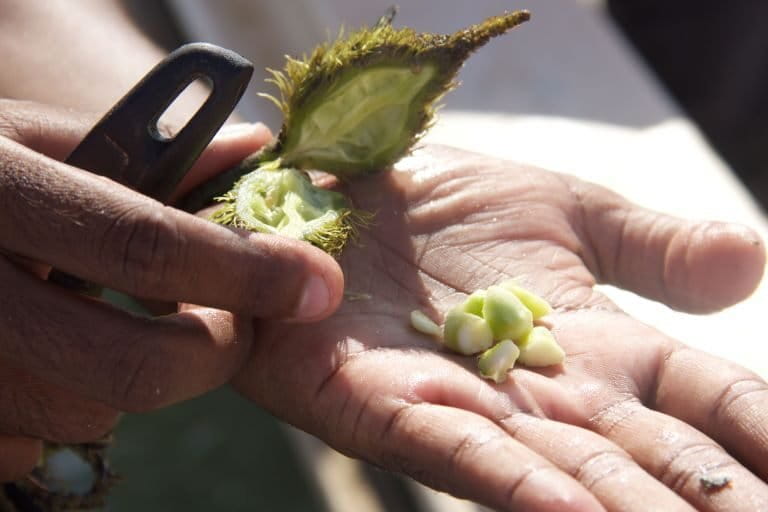- Following a proposal from Sri Lanka, the United Nations declared March 1 as World Seagrass Day, recognizing their importance and creating awareness of this much-overlooked marine habitat.
- A recent four-country study including Sri Lanka examines household dependencies on seagrass and highlights how coastal fishers rely on seagrass habitats for higher fish catch.
- Similar to several other countries, seagrass habitats in Sri Lanka are threatened by an array of issues and activists are calling for government intervention to prevent new aquaculture and mineral mining projects in close proximity to key seagrass habitats.
- Meanwhile, experts are calling for a strategic environmental assessment of Sri Lanka’s coastline, especially focusing on the blue carbon ecosystems, including seagrasses.
COLOMBO — The fishers in Illuppaikadawei village in the northern district of Mannar mostly use fence fishery, where they erect a series of poles and tie a net around them during high tide. When the tide retreats, the fish get trapped in the net. “We prefer to set up these traps near the seagrass beds, as there are more fish, crabs and squids,” says Angie Thomas, a fisher who practices fence fishery, a family tradition.
Thomas and other fisher households in the village get sufficient catch to sustain their daily needs despite their fishing area being quite small, thanks to the seagrass meadows on the coastline.
“Seagrass meadows support a great abundance and diversity of fish and invertebrates where a number of commercially and recreationally important species have been linked to seagrass at some stage of their life cycle,” says Susantha Udagedara, of the Blue Resources Trust (BRT), an organization that started studying seagrasses more than a decade ago.

In a study that delves into socioeconomic factors across 147 villages in Cambodia, Indonesia, Sri Lanka and Tanzania, a group of scientists including Udagedara report that seagrass is the most preferred habitat for fishing across villages in all the four countries studied due to the reliability of a good catch.
Poorer households are less likely to own motorboats, and this makes them significantly dependent on seagrasses, as they are unable to fish elsewhere. This highlights the economic reasons, in addition to their other natural values, for protecting seagrass meadows, Udagedara, a member of the IUCN Species Survival Commission (SSC) Seagrass Specialist Group told Mongabay.

Marine flowering plants
Seagrasses are marine flowering plants that grow in shallow waters found in 159 countries across continents ranging from the tropics to the Arctic Circle, covering more than 300,000 square kilometers (115,800 square miles), according to the United Nations Environment Program (UNEP) report “Out of the blue.”
Despite covering only 0.1% of the ocean floor, the seagrass meadows are highly efficient carbon sinks, storing up to 18% of the world’s oceanic carbon, according to the report. Seagrass absorbs carbon and assists to buffer ocean acidification, thereby offering protection to coral reefs and helps to absorb wave energy, which provides protection from storms.

Despite many still not being aware of the value of this important ecosystem, the United Nations adopted March 1 as World Seagrass Day following a proposal from Sri Lanka, an Indian Ocean island.
“Getting an international day is monumental in raising awareness, and we thank Sri Lanka and numerous individuals for the effort taken that eventually led to adopting March 1 as World Seagrass Day,” says Benjamin Jones of the World Seagrass Association. Global cooperation toward the protection of seagrass conservation and restoration is needed, as seagrass meadows are declining, says Jones.

The decline of seagrasses started in the late 19th century, according to UNEP. Some 7% of seagrass meadows are lost each year; an area equivalent to a football field of seagrass is lost every 30 minutes. At least 22 of the world’s 72 seagrass species are in decline at the global level.
Fourteen species of seagrass have been recorded so far in Sri Lankan waters, and out of these, one is categorized as endangered while six other species of seagrasses are categorized as near threatened in the National Red List 2012 of Sri Lanka.
The distribution and composition of seagrass in Sri Lanka’s coastal zone are not fully surveyed and the number of species could be much higher, says Prasanna Weerakkody of the Ocean Resources Conservation Association (ORCA). Sri Lanka was among the eight countries of the first coordinated global effort to conserve dugongs and their seagrass habitats with UNEP support. During this project, some areas of the Gulf of Mannar and Palk Bay were surveyed by Weerakkody and his team.

There is illegal bottom trawling by Indian fishers and this could rake off the seagrass meadows, Weerakkody tells Mongabay.
Industrial and agricultural runoff, dredging, illegal fishing activities, tourism activities and port development are only some of the threats to the seagrasses. The concentrated effluents released by aquaculture and mariculture projects can also affect the seagrasses, says Udagedara.
Shallow waters in the Gulf of Mannar and the Palk Bay are Sri Lanka’s most important seagrass habitats, and many aquaculture projects are mushrooming in the areas. At present, Sri Lankan environmentalists are fighting to contain shrimp farming in the Vidattaltivu Nature Reserve, which is close to the rich seagrass meadows of Mannar.

Strategic assessment on coastline
“Sri Lanka urgently needs a strategic environmental assessment of its coastline, specially focusing on blue carbon ecosystems, including the seagrasses, for the interest of multiple stakeholders,” says Sewwandi Jayakody, director of Environmental Foundation Limited, a leading environmental NGO in Colombo.
Environmentalists, meanwhile, are calling for the protection of high biodiversity areas, while fishers and other stakeholders want to exploit natural resources for their livelihoods. Government agencies such as the National Aquaculture Development Authority and the Department of Fisheries and Aquatic Resources are already taking large swathes of seagrass meadows for culturing sea cucumber and exotic red algae. There are other development interests, such as shipping and port developments as well as tourism.

“Everything happens concurrently in the same landscape, and multiple agencies should have an idea of how to prioritize and work out what is best for that landscape,” Jayakody tells Mongabay.
But instead, exactly the opposite is happening now: behind closed doors different agencies discuss different ideas for the same location and this will create many problems in the future, Jayakody adds.
While Sri Lanka may have positively influenced the world to recognize seagrass as an important habitat, it is equally important for the island to carry out a strategic environmental assessment for the blue carbon economy even at a pilot level, setting an example to the world, Jayakody says.
Banner image of a rich seagrass meadow from the Gulf of Mannar in northern Sri Lanka, courtesy of Susantha Udagedara.
